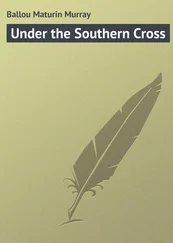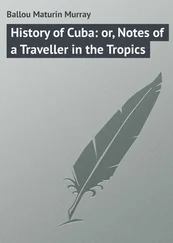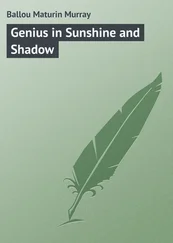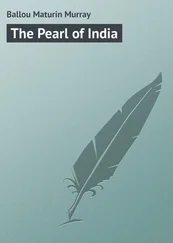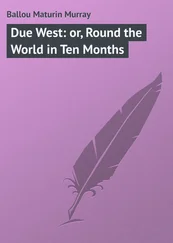Maturin Ballou - Due South - or, Cuba Past and Present
Здесь есть возможность читать онлайн «Maturin Ballou - Due South - or, Cuba Past and Present» — ознакомительный отрывок электронной книги совершенно бесплатно, а после прочтения отрывка купить полную версию. В некоторых случаях можно слушать аудио, скачать через торрент в формате fb2 и присутствует краткое содержание. ISBN: , Жанр: foreign_prose, на английском языке. Описание произведения, (предисловие) а так же отзывы посетителей доступны на портале библиотеки ЛибКат.
- Название:Due South: or, Cuba Past and Present
- Автор:
- Жанр:
- Год:неизвестен
- ISBN:http://www.gutenberg.org/ebooks/30130
- Рейтинг книги:4 / 5. Голосов: 1
-
Избранное:Добавить в избранное
- Отзывы:
-
Ваша оценка:
- 80
- 1
- 2
- 3
- 4
- 5
Due South: or, Cuba Past and Present: краткое содержание, описание и аннотация
Предлагаем к чтению аннотацию, описание, краткое содержание или предисловие (зависит от того, что написал сам автор книги «Due South: or, Cuba Past and Present»). Если вы не нашли необходимую информацию о книге — напишите в комментариях, мы постараемся отыскать её.
Due South: or, Cuba Past and Present — читать онлайн ознакомительный отрывок
Ниже представлен текст книги, разбитый по страницам. Система сохранения места последней прочитанной страницы, позволяет с удобством читать онлайн бесплатно книгу «Due South: or, Cuba Past and Present», без необходимости каждый раз заново искать на чём Вы остановились. Поставьте закладку, и сможете в любой момент перейти на страницу, на которой закончили чтение.
Интервал:
Закладка:
There are said to be six hundred of the Bahama islands, large and small, of which Nassau is the capital, and there, as already intimated, the English Governor-General resides. This numerical calculation is undoubtedly correct; many are mere rocky islets, and not more than twenty have fixed inhabitants. Is there anything more wonderful in nature than that these hundreds of isles should have been built up from the bottom of the sea by insects so small as to be microscopic? All lie north of Cuba and St. Domingo, just opposite the Gulf of Mexico, easily accessible from our own shores by a short and pleasant sea-voyage of three or four days. They are especially inviting to those persons who have occasion to avoid the rigor of Northern winters. People threatened with consumption seek Nassau on sanitary principles, and yet it was found upon inquiry that many natives die of that insidious disease, which rapidly runs its career when it is first developed in a tropical climate. To the author it would seem that consumptives might find resorts better adapted to the recovery of their health. Intermittent fever, also, is not unknown at Nassau.
The sea gardens, as they are called, situated just off the shores of the island, are well worth a visit; where, by means of a simple instrument of wood and glass, one is enabled to look many fathoms below the surface of the water, which is here so remarkable for its transparency. These water glasses are all of home manufacture, easily improvised, being formed of a small wooden box three or four inches square, open at the top, and having a water-tight glass bottom. With the glass portion slightly submerged, one is enabled to see distinctly the beautiful coral reefs, with their marvelous surroundings. There are displayed tiny caves and grottoes of white coral of great delicacy and variety, star-fishes, sea-urchins, growing sponges, sea-fans, and gaudy-colored tropical fishes, including the humming-bird-fish, and others like butterflies with mottled fins and scales, and that little oddity the rainbow-fish. The prevailing color of this attractive creature is dark green, but the tinted margins of its scales so reflect the light as to show all the colors of the rainbow, and hence its name. When bottled in alcohol, these fairy-like denizens of the deep lose their brilliancy, which they exhibit only in their native element. This unique display is greatly enhanced in beauty by the clearness of the Bahama waters, and the reflected light from the snow-white sandy bottom, dotted here and there by curious and delicate shells of opalescent lustre. One longs to descend among these coral bowers, – these mermaid-gardens, – and pluck of the submarine flora in its purple, yellow, and scarlet freshness.
It will be remembered that Columbus wrote home to his royal patrons that the fish which abounded in the seas partook of the same novelty which characterized everything else in the New World. This was about four hundred years ago, before the great Genoese had discovered Cuba. "The fish," as he wrote, "rivaled the birds in tropical brilliancy of color, the scales of some of them glancing back the rays of light like precious stones, as they sported about the ships and flashed gleams of gold and silver through the clear water."
The surface life of these translucent waters is also extremely interesting. Here the floating jelly-fish, called, from its phosphorescence, the glow-worm of the sea, is observed in great variety, sheltering little colonies of young fishes within its tentacles, which rush forth for a moment to capture some passing mite, and as quickly return again to their shelter. One takes up a handful of the floating gulf-weed and finds, within the pale yellow leaves and berries, tiny pipe-fish, sea-horses, and the little nest-building antennarius, thus forming a buoyant home for parasites, crabs, and mollusks, itself a sort of mistletoe of the ocean. The young of the mackerel and the herring glance all about just beneath the surface near the shore, like myriad pieces of silver. Now and again that particolored formation of marine life, the Portuguese man-of-war, is observed, its long ventral fins spread out like human fingers to steady it upon the surface of the water. Verily, the German scientist who says there is more of animal life beneath the surface of the sea than above it cannot be far amiss. This seems to be the more reasonable when we consider the relative proportions of land and water. The whole surface of the globe is supposed to have an area of about two hundred million square miles. Of these only about fifty millions are dry land. Within the harbor of Nassau the divisions of shoal and deep water presented most singular and clearly defined lines of color, azure, purple, and orange-leaf green, – so marked as to be visible half a mile away. All was beneath a sky so deeply and serenely blue as constantly to recall the arching heavens of middle India.
The Bahama Banks is a familiar expression to most of us, but perhaps few clearly understand the significance of the term, which is applied to a remarkable plateau at the western extremity of the archipelago, occupying a space between two and three hundred miles long, and about one third as wide. These banks, as they are called, rise almost perpendicularly from an unfathomable depth of water, and are of coral formation. In sailing over them the bottom is distinctly seen from the ship's deck, the depth of water being almost uniformly forty to fifty feet. Some years since, when the author was crossing these banks in a sailing ship, a death occurred among the foremast hands, and the usual sea burial followed. The corpse was sewn up in a hammock, with iron weights at the feet, the more readily to sink it. After reading the burial service the body was launched into the sea from a grating rigged out of a gangway amidship. The waters were perfectly calm, and the barque had but little headway. Indeed, we lay almost as still as though anchored, so that the body was seen to descend slowly alongside until it reached the calcareous, sandy bottom, where it assumed an upright and strangely lifelike position, as though standing upon its feet. An ominous silence reigned among the watching crew, and it was a decided relief to all hands when a northerly wind sprang up, filling the canvas and giving the vessel steerage way.
So many years have passed since the occurrence of the scene just related that we may give its sequel without impropriety, though, at the same time, we expose the venal character of Spanish officials. The man we buried on the Bahama Banks had died of small-pox, though no other person on board showed any symptoms of the disease. On entering the harbor of Havana, three days later, we had been hailed from Moro Castle and had returned the usual answer. A couple of doubloons in gold made the boarding officer conveniently blind, and a similar fee thrust quietly into the doctor's hand insured a "clean bill of health," under which we were permitted to land! The alternative was twenty-one days' quarantine.
Fort Montague, mounting four rusty guns, "with ne'er a touch-hole to any on 'em," as Bushy informed us, stands upon a projecting point about a mile from the town of Nassau, the road thither forming a delightful evening promenade, or drive. The fort is old, crumbling, and time-worn, but was once occupied by the buccaneers as a most important stronghold commanding the narrow channel. These sea-robbers imposed a heavy tax upon all shipping passing this way, and for many years realized a large income from this source. It was only piracy in another form. Most vessels found it cheaper to pay than to fight. When the notorious Black Beard had his headquarters at Nassau, he sought no such pretext, but preyed upon all commerce alike, provided the vessels were not too well armed to be captured. This notorious pirate had an innate love for cruelty, and often tortured his captives without any apparent purpose, after the fashion of our Western Indians. When the English lashed the mutineers of Delhi and Cawnpore to the muzzles of their cannon and blew them to pieces, they were enacting no new tragedy; legend and history tell us that Black Beard, the pirate of the Windward Passage, set them that example many years before. His rule was to murder all prisoners who would not join his ship, and those whom he took fighting, that is, with arms in their hands, were subjected to torture, one form of which was that of lashing captives to the cannon's mouth and applying the match. Fort Montague is not occupied by even a corporal's guard to-day, and is of no efficiency whatever against modern gunnery. The reader will thus observe that the principal business which has engaged Nassau heretofore has been wrecking, buccaneering, privateering, and blockade running.
Читать дальшеИнтервал:
Закладка:
Похожие книги на «Due South: or, Cuba Past and Present»
Представляем Вашему вниманию похожие книги на «Due South: or, Cuba Past and Present» списком для выбора. Мы отобрали схожую по названию и смыслу литературу в надежде предоставить читателям больше вариантов отыскать новые, интересные, ещё непрочитанные произведения.
Обсуждение, отзывы о книге «Due South: or, Cuba Past and Present» и просто собственные мнения читателей. Оставьте ваши комментарии, напишите, что Вы думаете о произведении, его смысле или главных героях. Укажите что конкретно понравилось, а что нет, и почему Вы так считаете.






